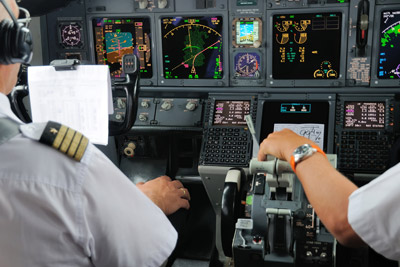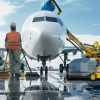 As the global trend toward next-generation air traffic management systems evolves, and parts obsolescence issues increase, airlines operating aging fleets are considering upgrading cockpits with modern avionics as replacements for legacy systems. ICF SH&E estimates the avionics upgrade market for air transport to reach $1 billion by 2023 for a CAGR of 6.1%. In fact, avionics upgrades are projected to increase faster than the overall MRO market, which is growing at a 3.9% CAGR for the period.
As the global trend toward next-generation air traffic management systems evolves, and parts obsolescence issues increase, airlines operating aging fleets are considering upgrading cockpits with modern avionics as replacements for legacy systems. ICF SH&E estimates the avionics upgrade market for air transport to reach $1 billion by 2023 for a CAGR of 6.1%. In fact, avionics upgrades are projected to increase faster than the overall MRO market, which is growing at a 3.9% CAGR for the period.
As aircraft get more sophisticated, so does the technology behind the avionics systems they use. Needless to say, the availability of a cost-effective solution that enhances the product life-cycle becomes very important to aircraft operators. However, as technology advances and OEMs tend to increase their focus on what's new, the coming of next generation air traffic management is forecasted to become the major driver behind commercial airliner avionics upgrades. In turn, this will mean a significant amount of retrofitting on older aircraft, to include upgraded flight management systems, autopilots and primary displays.
“System obsolescence is an increasingly prevalent problem with mature avionics. Naturally, it is frustrating operators as they deal with potentially long spares lead times from avionics OEMs, while trying to secure scarce parts for equipment manufactured in the 1980s or early 1990s. Needless to say, these are all sound reasons for completing appropriate system upgrades,” says Kestutis Volungevicius, Head of Engineering and Training at FL Technics. “For instance, there are thousands of aircraft operating with vintage CRT displays, and with them, increasing reliability and maintainability issues for the airlines. CRTs are very expensive to repair or replace, and for products with built-in CRTs, repair costs escalate more quickly than average.”
One of major Canadian providers is currently experiencing a growing demand for modern avionics installations. According to the company, 80% of its avionics business is focused on cockpit upgrades. Moreover, Innovative Solutions & Support predicts that the avionics retrofit market could total $10 billion over the next 10 years. Analysts say the MD-80/90 series, as well as Boeing 737, 757 and 767 aircraft will account for most of the business, with North American and European carriers generating 80% of the market.
“These upgrades improve airline operations and safety, while the increases in reliability improve both the operations and reduced life-cycle maintenance costs. However, the  decision to install new cockpit displays must also be based on a bigger-picture view. Ultimately, airlines have to weigh upgrade costs against the increasing maintenance costs generated by the aging engines and airframe,” explains Kestutis Volungevicius, the Head of Engineering and Training at FL Technics.
decision to install new cockpit displays must also be based on a bigger-picture view. Ultimately, airlines have to weigh upgrade costs against the increasing maintenance costs generated by the aging engines and airframe,” explains Kestutis Volungevicius, the Head of Engineering and Training at FL Technics.
For instance, current discounts available to purchase new airplanes may encourage some to opt for new equipment, rather than to make the investment to update legacy aircraft such as Boeing 737 Classic. However, for other aircraft such as the 757, which performs well as a freighter, upgrades may be a realistic option to extend in-service aircraft life.
“Of course, with more aircraft being retired in favour of newer, more fuel-efficient models, the avionics upgrade market could take a hit. However, while this could reduce the market's size, operators purchasing new aircraft will have to wait years for delivery—and make do with their existing fleets in the interim. As a result, airlines should be prepared to look at innovative solutions from other avenues, rather than just relying on OEMs and the status quo,” concludes the Head of Engineering and Training at FL Technics.





